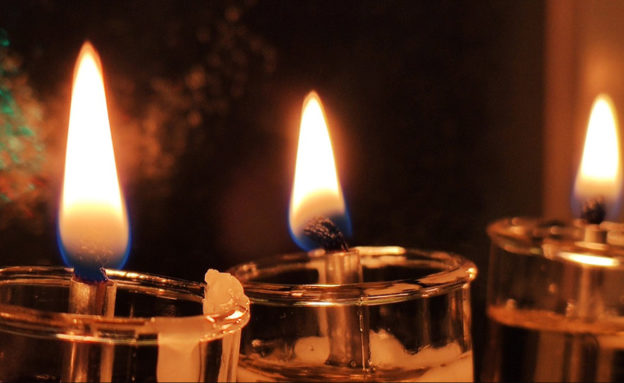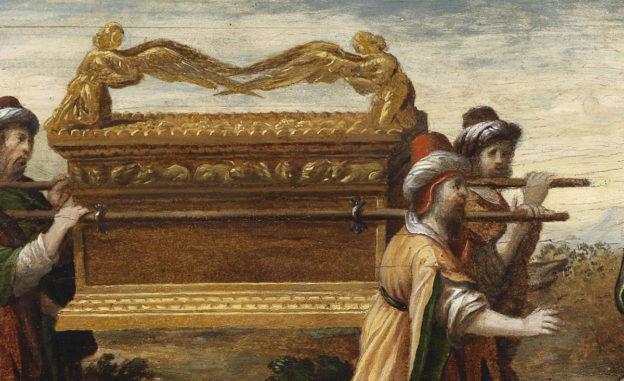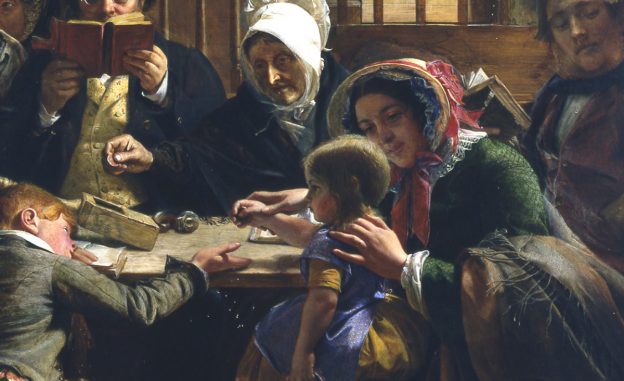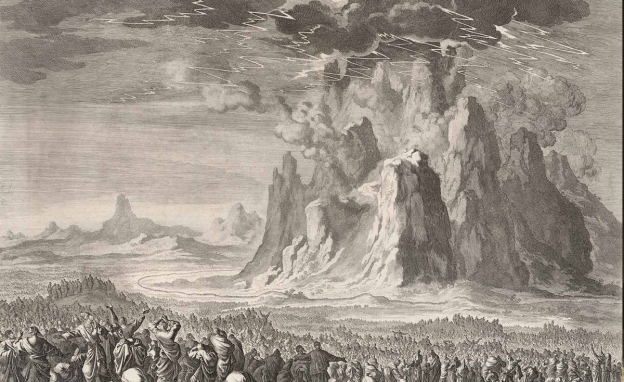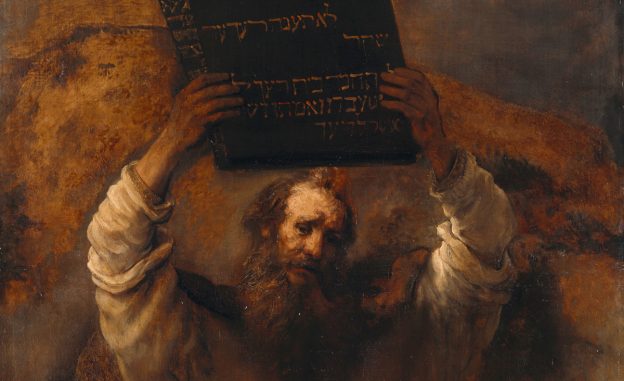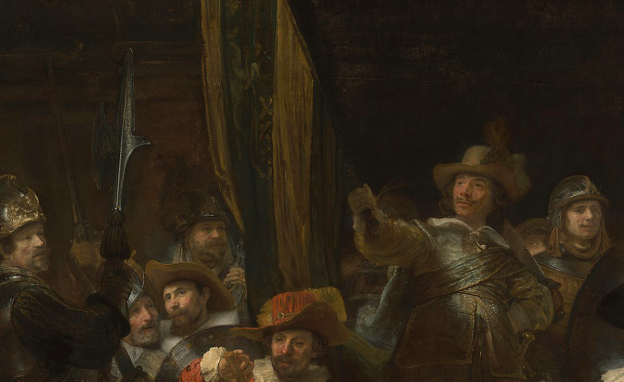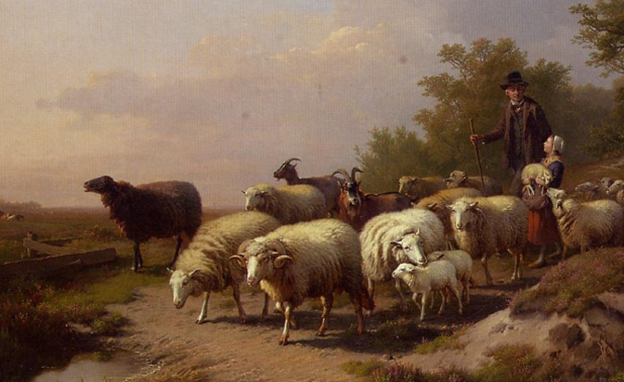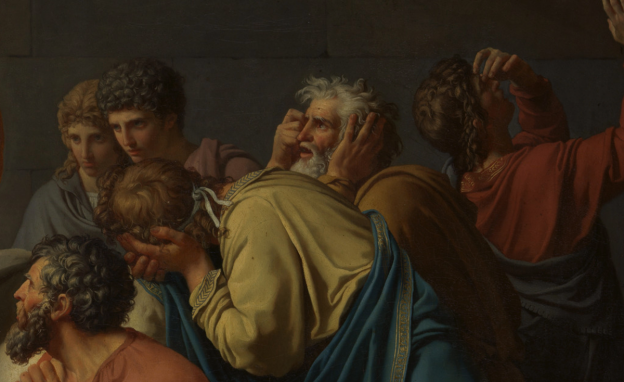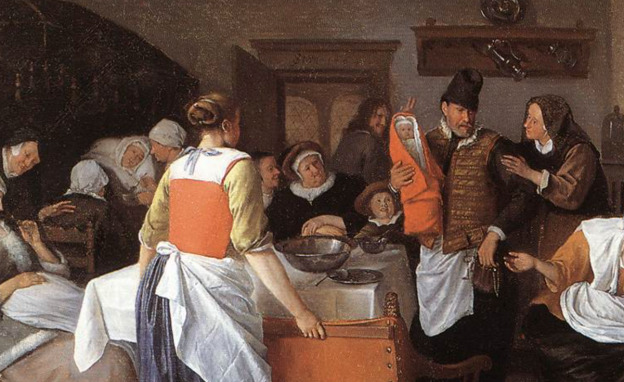This week the weather and the seasons have conspired to make our house quite dark at times. While it’s normal that during night time we have the lights on, we have needed them in the daytime too because of the gloomy weather. In God’s tent, which was multiple layers of fabric made of animal skin, it was quite dark and gloomy as well. Light was needed.
Not surprisingly then, God gave Moses instructions for the construction of a lampstand for the tent. After all, it is difficult to serve God in the Tent of Meeting when you stumble into the Table of the Presence! But as with the other items in the tent, their use went beyond the practical, to help teach the Israelites and us that God is the true source of light and life in the darkness of a sinful world.
Moses was told to “make a lampstand of pure gold. The lampstand shall be made of hammered work: its base, its stem, its cups, its calyxes, and its flowers shall be of one piece with it” (v.31). Rather than casting the whole piece, they were to heat the gold until soft and then hammer it into shape; something requiring a great deal of artistic talent.
What is also notable in the description is that this lampstand is to resemble a tree, with stems and flowers on it. This is also clear in the structure of the lamp, with “six branches going out of its sides, three branches of the lampstand out of one side of it and three branches of the lampstand out of the other side of it” (v.32).
The visual idea conveyed here is a growing plant, with a total of six branches and a trunk, perhaps symbolising the perfect light conveyed (seven is a number often associated with perfection).
Each of the six branches contained “three cups made like almond blossoms, each with calyx and flower” (v.33), thus making the tree resemble in some way an almond tree which was common in that part of the world.
The stem contained “four cups made like almond blossoms, with their calyxes and flowers, and a calyx of one piece with it under each pair of the six branches going out from the lampstand” (vv.34-5). The buds and branches were all part of the one stand, hammered out of one sheet of gold (v.36).
The lamps were separate to the lampstand, and rested on each of the branches. They were set up so that they lit up “the space in front of it” (v.37) which contained the Table of the Presence and cast a shadow on the wall. When these lamps were adjusted every day, they could be removed from the stand to ease this process.
Unlike electric lamps with a bulb which you replace occasionally, the lamps of Moses’ day required a wax or fluid, and a wick which required adjusting or occasional replacing (similar to a kerosene or white spirits lamp). The utensils for trimming the wicks or trays for removing them were also made of pure gold (v.38), in keeping with the other elements of the Tabernacle which were coming into closer presence with a holy God.
Not surprisingly, this was a lot of gold. In verse 39, we learn that the weight of gold to use for the lampstand and accessories was “a talent of pure gold”, roughly equivalent to about 35 kilograms.
Finally, Moses was warned to ensure that the lampstand, along with the Table of the Presence and the Ark of the Covenant, were made “after the pattern for them, which is being shown you on the mountain” (v.40).
The lampstand served as the source of light in the Tabernacle, and reminded them that God was the true source of light. God provided light at Creation, initially from himself. Here in God’s restored dwelling with his people, he provides light to Israel.
This light is symbolic of the light in a dark world God provides. As Psalm 27:1 poetically describes, God is our light and salvation. In a world of dark sinfulness, God is a shining beacon of light who reveals the way through his Word.
The lampstand is also symbolic of God as the source of life. The lampstand was explicitly formed like a tree. This imagery points back to the Tree of Life in the Garden of Eden, which God provided to give continued life to Adam and Eve. In this fallen world, God is the source of eternal life, given to those who trust in him.
Ultimately, Jesus is the greatest fulfillment of the lampstand’s light and life. Jesus is the Way, the truth, and the life, and the light of the world, providing the light of life in the dark, sinful world (John 8:12).
It is in Jesus that we are called out of darkness and into God’s marvellous light, in which God illuminates his provision for us through his eternal presence with us. And this light still draws sinners from darkness to light and life today.

